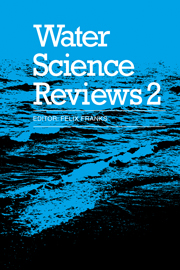Water Structure in Crystalline Solids: Ices to Proteins
Published online by Cambridge University Press: 05 March 2012
Summary
Introduction
The present picture we have of the three-dimensional structure of water in the majority of its existing states is far from satisfactory. Most of the structures in the solid phase – ordinary hexagonal ice-Ih, cubic ice-Ic and the high-pressure ices II to IX – are apparently well characterized, whereby the respective details are understood in the relatively simple terms of a tetrahedrally coordinated hydrogen-bonded lattice. The situation is very different for the liquid, aqueous solutions and amorphous ice. Within these phases, there is no underlying repeating lattice that forms the fundamental structural basis in crystals. The molecules can occupy many alternative positions relative to one another, provided they do not violate the intermolecular forces: hydrogen-bonding, van der Waals contacts, dispersion, etc. Significant angular distortions from the expected tetrahedral coordination occur, but the extent and limitations of these deviations are unclear.
The main method used in analysing the details of molecular structure is diffraction (neutron, X-ray and electron). This has been invaluable for locating the individual relative atomic positions of the molecules in the crystalline state; however, for molecular assemblies which have no repeating units the method is more limited. Diffraction from liquids and amorphous substances yields only structural information about correlations between pairs of atoms, pair correlation function (PCF), which gives the probability of finding an atom within a certain distance of another.
- Type
- Chapter
- Information
- Water Science Reviews 2Crystalline Hydrates, pp. 67 - 148Publisher: Cambridge University PressPrint publication year: 1986
- 24
- Cited by



